Latin name: Chrysanthemum
Origin: China
Category: annual and perennial herbaceous plants
Chrysanthemum - the beautiful queen of gardens
Chrysanthemum, creating a special beauty and splendor, thanks to its long flowering, is very popular with flower growers.
Chrysanthemum has been captivating and captivating people with its beauty for many centuries. The attractive flower has many legends. In one of the many, it is said that a cruel dragon came up with the idea of stealing the sun from people, and while stealing, he injured his paws. In anger, the dragon began to tear and trample the sun. The golden rays falling on the ground were transformed into white chrysanthemum flowers.
The charm of chrysanthemums was glorified in poetry by the authors of the whole world, the poets of Japan most often wrote about the wonderful chrysanthemum. The first types of flowers had only yellow color, in connection with this, the name of chrysanthemums took root in Japan - “sun”. At the beginning of the 12th century, only 36 chrysanthemums were grown. Thanks to the famous scientist Confucius, it was possible to classify flowers. In the modern world, many varieties have been bred, the largest part is grown in their homeland in China.
Chrysanthemums grow as shrubs and herbaceous plants. Height 50-150 cm, jagged, cut green leaves, inflorescences large and small of various colors, folded in a basket, their shoots are pubescent or bare.
Chrysanthemums are annual and perennial herbaceous plants from the Astrov family.
Chrysanthemum can be perfectly grown in flowerpots at room conditions, and also develops remarkably in home gardens.
Types of chrysanthemums
There are many types of chrysanthemums. Hybrid species such as Japanese, Korean, Chinese chrysanthemums are in demand in our space. Species are represented by various colors - simple, curly, semi-double, flat, ray-shaped, spherical. Petals also differ from each other - reed and tubular varieties. In the center of the inflorescences, petals grow, which belong to the tubular ones, but the reed leaves are located along the edges.
In terms of flowering, chrysanthemums should be noted, which bloom early in September, medium in October, late in November. Varieties are low-growing and high-growing, and combine various inflorescences.
There are types of chrysanthemums representing a different life cycle: annual and perennial.
The variety “Mishung”, “Kokarde”, etc. belongs to the annual species. And there is also a variety of annuals - a chrysanthemum topped with a vegetable. Flowers continue to bloom until late autumn. This species is allowed to be sown on personal plots. Chrysanthemums of the annual species are unpretentious, therefore they are not difficult to grow for beginner flower lovers.
The perennial species of chrysanthemums is a variety of greenhouse and Korean, such as "Golubil", "Florida". Plants are popular due to their chic flowering. Representatives of this species are unpretentious in cultivation, bad weather will not harm them, and their care is simple.
There are varieties of flowers that differ in the size of the inflorescence.
There are more than 100 flowers on one bush. By size, chrysanthemums consist of three groups: small-flowered, medium-flowered, large-flowered.
Small-flowered species are pided into terry and simple. The length of the bushes is up to one meter and even higher. There are a lot of inflorescences on the bushes, flowers are 10 cm in diameter. Chrysanthemum leaves are very similar to oak leaves. The plant tolerates cold well, grows on various soils. Caring for flowers is not difficult. They bloom in September and continue to bloom until frost.
A variety called Multi Flora is especially popular. Bushes grow in a spherical shape. Flowers of this species grow well, being both indoors in flowerpots and outdoors.
Representatives of this variety Blanco, Chita, Zhemchuzhina are in demand. Widely used in the landscape Korean variety of chrysanthemums, evergreen, in weak frosts continue to bring joy with their luxurious appearance, thanks to flowering. Flowers perfectly decorate offices, personal plots, houses and apartments.
Medium-flowered chrysanthemums grow well indoors in flowerpots and outdoors on open ground. The length of the bush is about 80 cm, the size of the flowers is 17 cm. The Pink Daisy variety is considered the most frost-resistant, but the Golden Fleece is the most beautiful. The flowers of this variety are yellow, reminiscent of huge daisies.
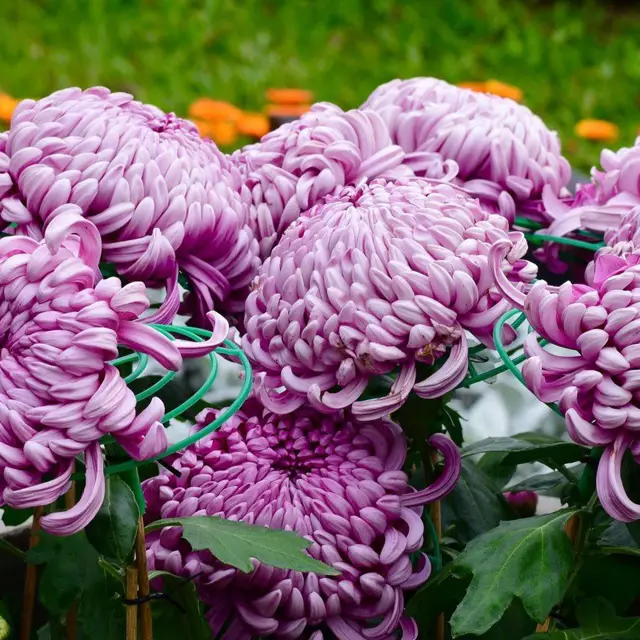 Large-flowered chrysanthemums are magnificent, charming flowers growing on tall stems. Flowers do not withstand changes in temperature differences, therefore they are grown in most cases in greenhouses. Currently, breeders have managed to develop frost-resistant varieties. The amazing variety "Anastasia" is considered popular, they reach a length of up to one meter, the stem has petals with needles. Flowers of this species are usually cut to make bouquets, and are very popular for creating a beautiful decorative look.
Large-flowered chrysanthemums are magnificent, charming flowers growing on tall stems. Flowers do not withstand changes in temperature differences, therefore they are grown in most cases in greenhouses. Currently, breeders have managed to develop frost-resistant varieties. The amazing variety "Anastasia" is considered popular, they reach a length of up to one meter, the stem has petals with needles. Flowers of this species are usually cut to make bouquets, and are very popular for creating a beautiful decorative look.
Growing flowers in flowerpots is popular with flower growers. It is not difficult to care for flowers in order to grow a beautiful chrysanthemum, because it is unpretentious in the ways of courting. Potted chrysanthemums bloom in various shades of color, with a pleasant smell inherent in them. Flowers grow to a maximum length of 65cm. They have smooth or hairy stems and leaves. The most popular varieties have simple or curly leaves. They bloom in late summer, and continue to bloom until the beginning of winter.
Indian indoor chrysanthemums require special attention in caring for them. Flowers do not tolerate poor lighting, drafts, sudden changes in temperature, dry soil. Perennial has 10 thousand different species. Plants grow in baskets, acquiring red, orange and white colors.
A type of Korean small-flowered perennials is bred on the street and indoors. Flowers consist of subspecies: curb, tall, medium. View "Amber" belongs to the most beautiful. This plant has yellow flowers.
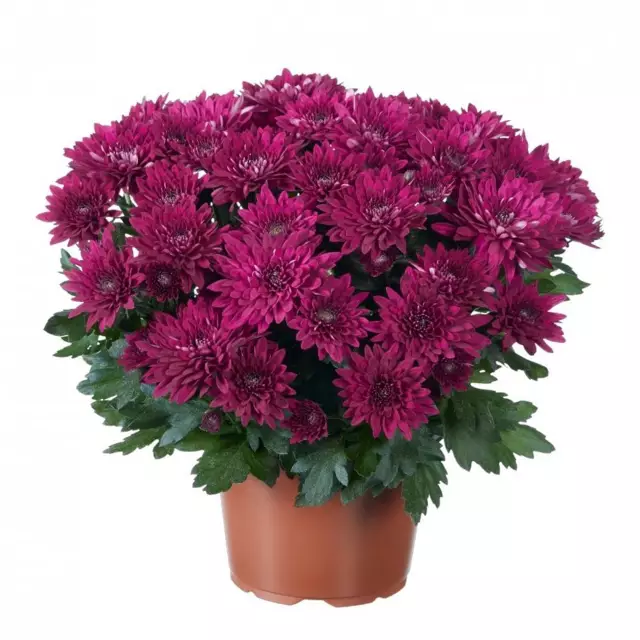 Variety Alexandrite - graceful, low-growing bushes with beautiful leaves, created for the microclimate of the house. They begin flowering in early autumn, with double and semi-double flowers, lilac on the edge, and a lemon core.
Variety Alexandrite - graceful, low-growing bushes with beautiful leaves, created for the microclimate of the house. They begin flowering in early autumn, with double and semi-double flowers, lilac on the edge, and a lemon core.
Variety Knopa grows 35 cm long, with yellow flowers. It blooms in October, and continues to bloom until the first frost. Chrysanthemum calmly withstands a transplant of a bush even when it blooms. Flowers are planted in pots at home, or near the curb.
Home care for chrysanthemums in pots
Floriculture lovers love to grow charming chrysanthemums in the room by growing them in flowerpots. Choosing the right variety will not be difficult, because there are a huge variety of chrysanthemums of different shapes and colors.
To grow flowers in flowerpots, you should give preference to small-sized varieties that do not grow very tall, no more than 70 cm in length.
The most famous and famous for home care are Chinese varieties: Charm, Cascade, Minimum. Korean varieties have a spherical appearance: Navare, Orange Jam, Stella. Chrysanthemums of Indian varieties Snow Elf, Aurora, Zembla Mix.
Growing and caring for chrysanthemums
Chrysanthemum for comfortable growth should choose the right lighting, temperature, soil.
Growing temperature
A suitable temperature is 15-18℃. Being at a higher temperature, the leaves of the chrysanthemum will wither, and the inflorescences will dry out. The plant must be taken out to a more suitable room with a cool temperature when it is very hot outside.
Lighting
It should be made dim and short-lived, so chrysanthemums are not placed on window sills. The plant is well suited for a place on stands away from strong lighting.
Priming
The soil must be chosen not acidic, it is considered suitable, consisting of the following composition: sand, earth, peat. Before planting a chrysanthemum in the soil, it should be calcined for 5-10 minutes in the oven, or you can pour it with hot water.
Properly observing the rules of care, it is not difficult to grow a beautiful flower.
Humidity
The plant perfectly tolerates abundant moisture in the soil and air.
To create a satisfactory growth and a cozy state of chrysanthemum, spraying should be done 2-3 times a week, moisten the soil every three days. Avoid water retention in the soil. When watering in insufficient quantities, the root of the flower dries up, and may even die.
Fertilizer
When feeding room chrysanthemum with various fertilizers, the plant develops excellently, so this order of care is considered very necessary.
The missing amount of potassium and phosphorus elements is very harmful during the flowering period. Chrysanthemums bloom late and not abundantly.
Pruning
Pruned plants in the spring once, but in the summer three times. With so many prunings, a beautiful, well-groomed crown is created. Inflorescences must be cut immediately after flowering so that the chrysanthemum does not use force to maintain them. In winter, the plant is trimmed to a third of the entire height so that it has a neat bush. And when the chrysanthemum completely stops blooming, it should be cut off, leaving stumps, then the plant will restore its strength for further growth and flowering.
Home care
When the winter time comes, the flowers are placed in the room, the temperature should be 2-5℃, watered a decade once.
Chrysanthemum should be transferred to the temperature accustomed to it when it begins to grow.
The flower is transferred to another pot, and you can also replace the soil. Then they resume the usual care of the flower, fertilize and resume the previously used watering method.
Subject to proper care of the flower, it will live, bringing joy for a long time, and decorate the interior of the house and apartment.
It is necessary to create comfortable conditions for flowers for their growth, you should constantly monitor their condition and take preventive measures in a timely manner. In the event that the plant does get sick, it is important to know which method of helping the plant is the most effective.
Chrysanthemum is poisonous to animals.
Pests and diseases
Chrysanthemum is a wonderful flower of autumn time, giving pleasure to people, thanks to the variety of colors and splendor of flowering.
But, unfortunately, they are also susceptible to diseases and pests - mites, aphids, white rust, powdery mildew.
Many difficulties with flowers appear with improper care. Despite the fact that these flowers are highly immune, they also have diseases, and they are also susceptible to pests.
Most often, a non-communicable disease begins in such situations: insufficient watering, high air temperature, being in a closed place for a long time, active reproduction during the growth period. Such diseases occur on some flowers without harming a healthy plant.
On soil without drainage and heavy, poor saturation of the roots with oxygen occurs, they do not have the opportunity to have enough nutrients. As a result, the plant becomes ill, the leaves take on the appearance of yellowness, the roots rot at this moment, and eventually disappear.
When soil acidity occurs, a fungal infection occurs as a result of oversaturation with nitrogen fertilizers, elevated temperatures and impaired air circulation.
A fungus appears - the appearance of spots on the leaves. At the beginning of the fungal infection, the leaves turn yellow, and then turn brown and even take on the appearance of black.
For prevention and treatment, destroy the leaves that have succumbed to the disease. When infected to a large extent by infection, fungicides are used, which include chlorothalonil, mancozeb, propiconazole.
A disease in which a white coating appears on the leaves - powdery mildew, occurs when a fungus is damaged. This disease begins with high humidity.
For prevention and treatment, damaged leaves are cut off and chrysanthemums are treated with fungicides.
A disease in which the stem rots and the plant withers is bacterial rot.
For prevention and treatment, the soil is disinfected with heat.
Next, we consider in detail the pests of chrysanthemums.
These include aphids, different in color. Greenhouse aphids are pink and green, brown aphids are brown. These pests feed on young stems, shoots, and inflorescences. Aphids disrupt growth, and can even lead to the death of the plant.
For prevention and treatment, aphids are removed with a trickle of water. The procedure is repeated many times. Ladybug is an enemy of aphids. You can help the chrysanthemum by applying a composition with copper sulfate and soap, making a solution of 20 grams of vitriol and 200 grams of soap, and also by dissolving one tablespoon of baking soda per liter of water. It will help get rid of aphids and infusion of chamomile or yarrow by spraying the plant. It is necessary to resort to the help of insecticides in rare cases, only when other methods of controlling aphids do not help.
The spider mite appears on the underside of the leaves and spins a web. The leaves turn yellow and disappear.
Treatment in the fight against ticks - treat the chrysanthemum with the medicine "Aktellik" or "Fitoverm".
The meadow bug damages leaves, flowers and buds. The leaves curl, the flowers do not bloom.
The treatment for expelling bedbugs is the same as for the destruction of aphids and mites.
Difficult Growing Moments
- Chrysanthemum does not bloom - insufficient lighting, unsuitable soil composition, no fertilizer was applied, the bush was cut late when there were shoots with inflorescences.
- Why the leaves of the flower begin to turn yellow - poor drainage, dense soil that does not allow moisture to pass to the roots, a small pot, poor soil, and the appearance of fungus.
- The chrysanthemum dried up, the leaves died off - poor watering, bacteria appeared in the soil.
- Chrysanthemum lowered its leaves - replace the soil, not enough light.
- The plant is pulled up - poor lighting, untimely pruning, little fertilizer was applied.
What to do if the chrysanthemum does not bloom?
Consider the very important question of what needs to be done in order for the flowers to bloom.
Chrysanthemums growing at home and in the garden should be pruned and plucked. This is an important circumstance for it to bloom.
Plants should be pinched in the first year of life.
In the case of stretching the shoots, but there are no buds, this means that the chrysanthemum needs to trim the high shoots, sprinkling the cut sections with activated charcoal. Having chosen such a method of helping the plant, new branches will grow, and after a while it will bloom.
After the growing season, it is necessary to prune the stems where the flowers have faded and fade, then the chrysanthemum will have more strength to grow and bloom.
Plant Revitalization
Let's also consider such an important moment as to revive a drying chrysanthemum.
You should immerse the tips of the stems for two or three minutes in hot water, then immediately do it with them also in cold water. After this procedure, cut off the black tips of the stems, put in some water - 20-25℃.
To sum up - knowing and observing the rules for the care of chrysanthemums, it is not difficult to care for the plant. As a result, a beautiful flower will grow, pleasing with its magnificent flowering.















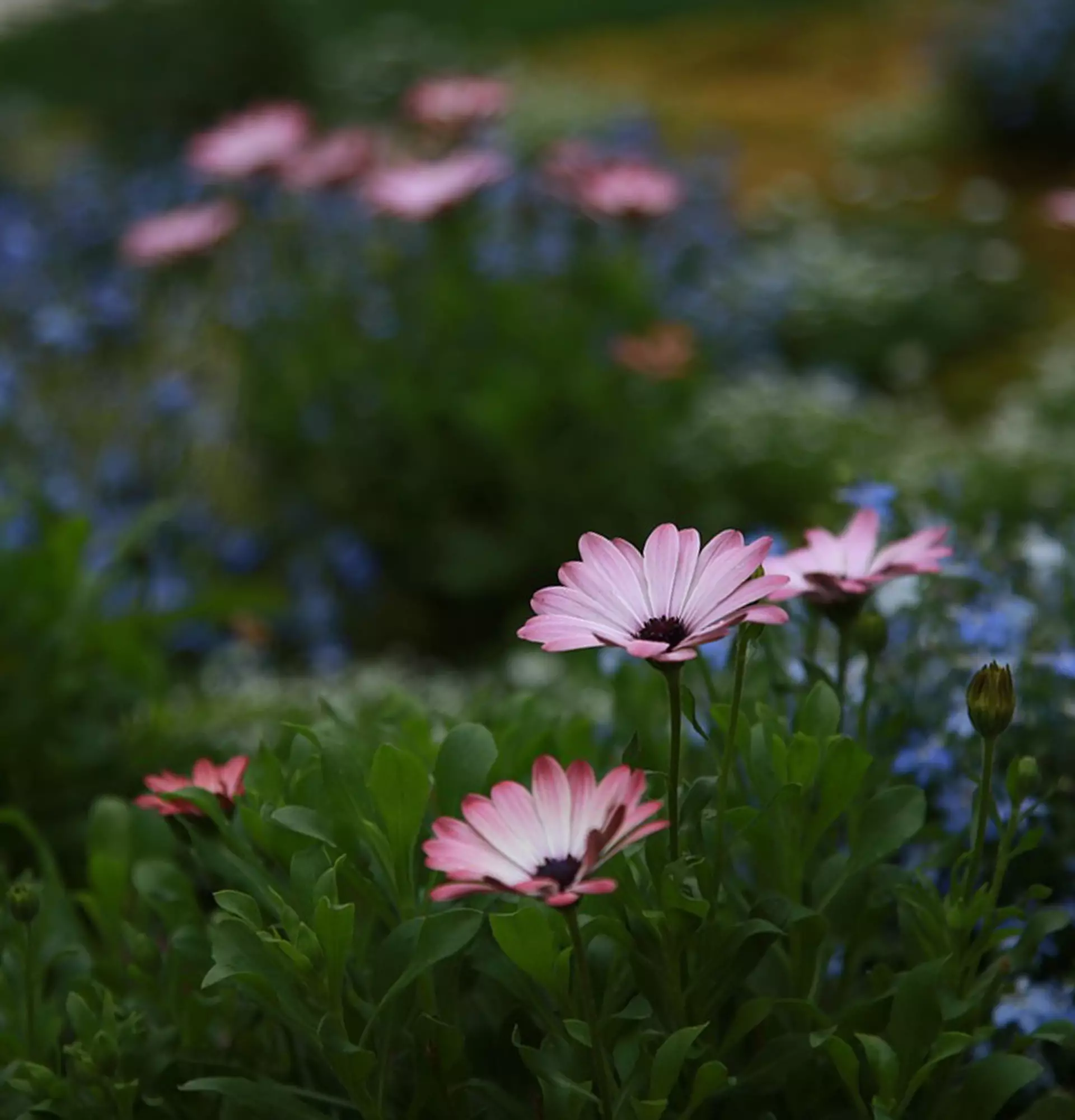
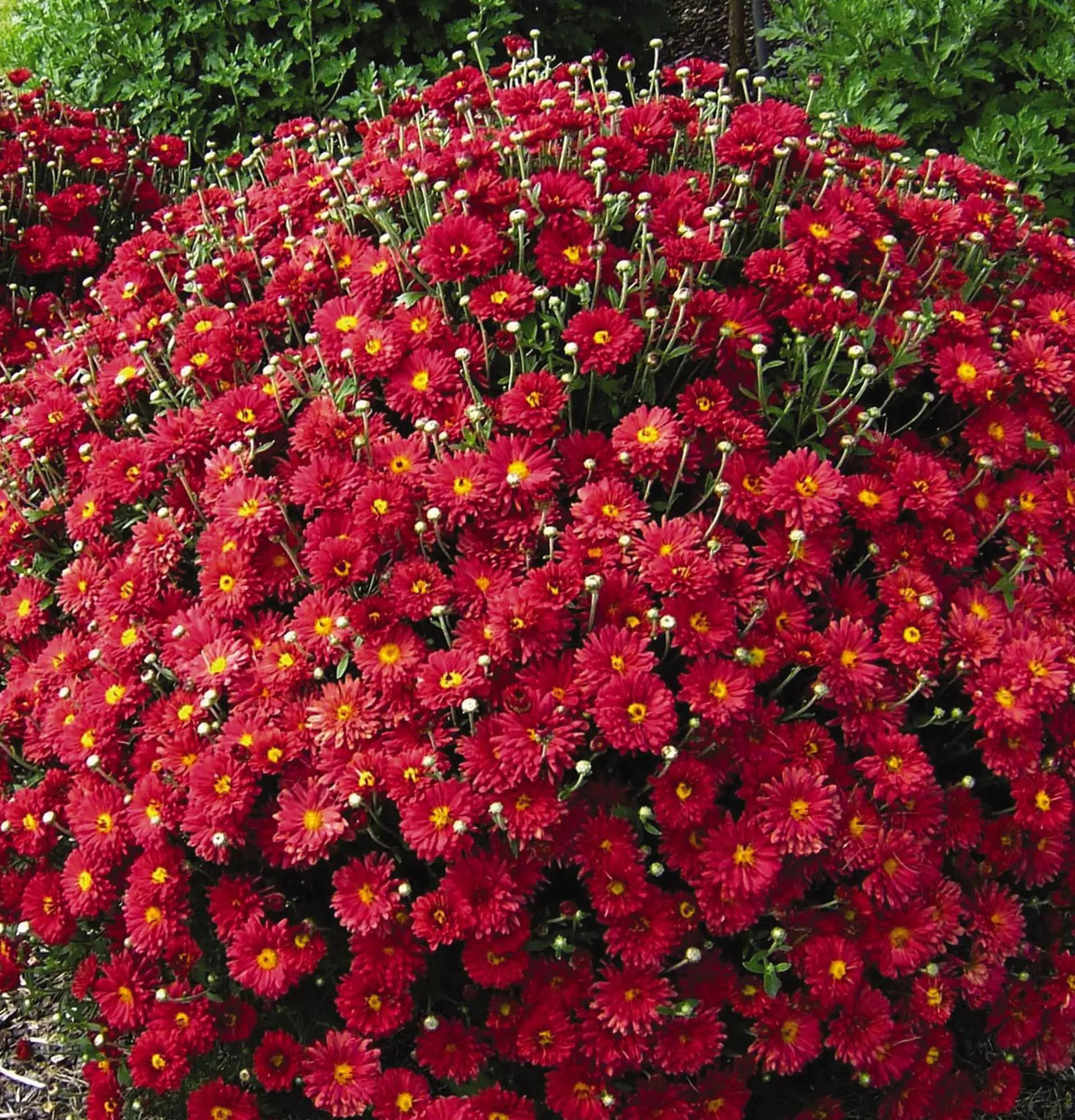
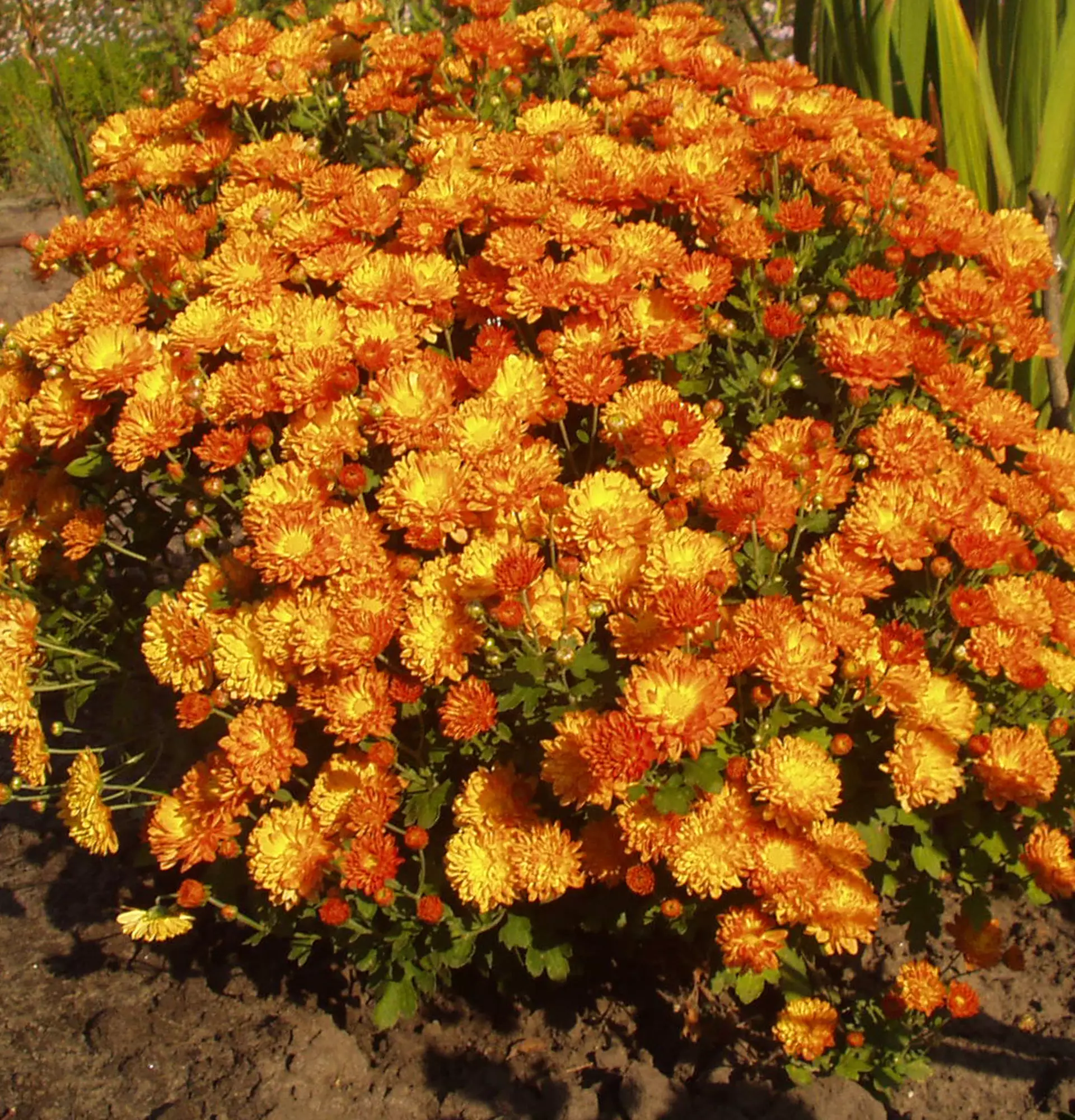

Write comments
Comments